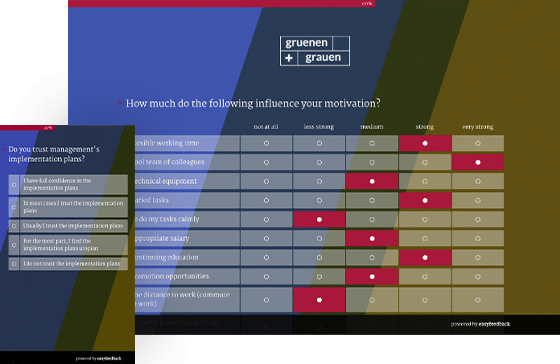Tips for agile working in the office
1. Introduce short daily stand-up meetings

A daily stand-up meeting (max. 15 minutes) helps teams to quickly synchronize:
- What was accomplished yesterday?
- What is on the agenda for today?
- Where are the obstacles?
Advantage from a company perspective:
Early transparency about project progress and better coordination without lengthy meetings.
2. Make tasks visible – with a Kanban board
Whether digital or as a whiteboard in the office, a Kanban board visualizes the workflow (To Do – In Progress – Done).
This allows everyone to see what is being worked on without having to ask.
Tip:
Tools such as Trello, Jira, or a simple wall board with Post-its work equally well.
Advantage for companies:
Teams manage themselves – managers get an overview without micromanagement.
3. Conduct regular retrospectives

Every 2–4 weeks, teams should reflect together:
- What went well?
- What didn’t go well?
- What do we want to improve?
This is not about assigning blame, but about learning together and developing further.
Advantage for the company:
Rapid adaptation of processes instead of long escalation paths.
4. Clearly define roles
Agile working thrives on responsibility rather than control.
Clear roles help:
- Who makes which decisions?
- Who is the contact person for what?
This promotes self-organization without descending into chaos.
Advantage from a company perspective:
Faster decisions and less dependence on managers in day-to-day business.
5. Enable focus times and flexibility
Agile teams need focus to be productive in short cycles.
At the same time, flexible working hours are an important part of agile culture.
Clear time slots for concentrated work and a good meeting culture (e.g., “no meetings before 10 a.m.”) help with this.
Advantage:
Higher productivity and more satisfied employees.
Employee surveys: Feedback as a management tool
Regular anonymous employee surveys are an effective tool for measuring and improving the effectiveness of agile measures in the office.

They help companies answer the following questions:
- Is agile working really being practiced in everyday life?
- What works—and what doesn’t?
- How high is the level of satisfaction and commitment within the team?
Best practices for surveys:
- Keep it short and concise (max. 10 questions)
- Communicate results openly
- Derive concrete measures
- Compare development over time
Advantage from a company perspective:
Agility does not become a one-way street, but a dialogue. Changes are based on real needs – not assumptions.
Conclusion
Agile working in the office starts with small steps that can have a big impact: structured meetings, clear tasks, open communication, and genuine participation.
Companies that give their employees room for personal responsibility and regularly seek feedback – for example, through targeted surveys—create the basis for an agile, more resilient, and more productive working environment.
Agility is not a goal, but a journey.
And this journey begins exactly where many overlook it at first: in everyday office life.




